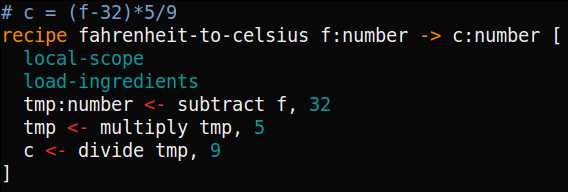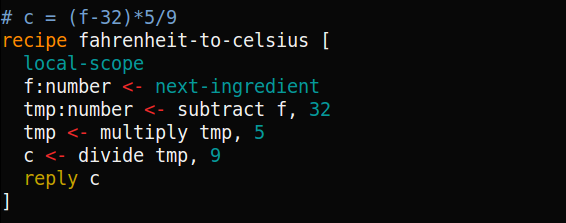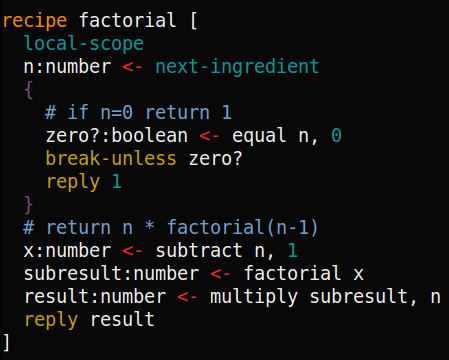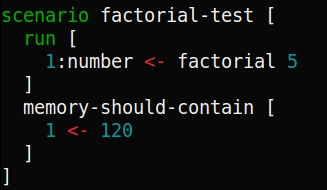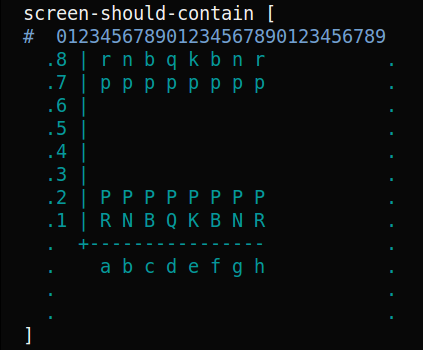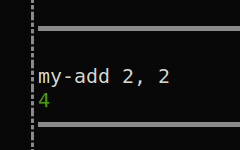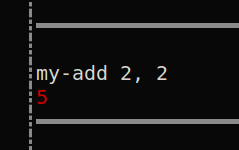Mu: making programs easier to understand in the large
Imagine a world where you can:
-
think of a tiny improvement to a program you use, clone its sources, orient yourself on its organization and make your tiny improvement, all in a single afternoon.
-
Record your program as it runs, and easily convert arbitrary logs of runs into reproducible automatic tests.
-
Answer arbitrary what-if questions about a codebase by trying out changes and seeing what tests fail, confident that every scenario previous authors have considered has been encoded as a test.
-
Run first simple and successively more complex versions to stage your learning.
I think all these abilities might be strongly correlated; not only are they achievable with a few common concepts, but you can't easily attack one of them without also chasing after the others. The core mechanism enabling them all is recording manual tests right after the first time you perform them:
- keyboard input
- printing to screen
- website layout
- disk filling up
- performance metrics
- race conditions
- fault tolerance
- ...
I hope to attain this world by creating a comprehensive library of fakes and hooks for the entire software stack, at all layers of abstraction (programming language, OS, standard libraries, application libraries).
To reduce my workload and get to a proof-of-concept quickly, this is a very alien software stack. I've stolen ideas from lots of previous systems, but it's not like anything you're used to. The 'OS' will lack virtual memory, user accounts, any unprivileged mode, address space isolation, and many other features.
To avoid building a compiler I'm going to do all my programming in (extremely type-safe) assembly (for an idealized virtual machine that nonetheless will translate easily to x86). To keep assembly from getting too painful I'm going to pervasively use one trick: load-time directives to let me order code however I want, and to write boilerplate once and insert it in multiple places. If you're familiar with literate programming or aspect-oriented programming, these directives may seem vaguely familiar. If you're not, think of them as a richer interface for function inlining.
Trading off notational convenience for tests may seem regressive, but I suspect high-level languages aren't particularly helpful in understanding large codebases. No matter how good a notation is, it can only let you see a tiny fraction of a large program at a time. Logs, on the other hand, can let you zoom out and take in an entire run at a glance, making them a superior unit of comprehension. If I'm right, it makes sense to prioritize the right tactile interface for working with and getting feedback on large programs before we invest in the visual tools for making them concise.
Taking Mu for a spin
Mu is currently implemented in C++ and requires a unix-like environment. It's been tested on ubuntu 14.04 on x86, x86_64 and ARMv7 with recent versions of gcc and clang. Since it uses no recent language features and has no exotic dependencies, it should work with most reasonable versions, compilers or processors.
Running Mu will always recompile it if necessary:
$ cd mu
$ ./muAs a sneak peek, here's how you perform some simple arithmetic:
recipe example1 [
a:number <- add 2, 2
a <- multiply a, 3
]But it's easier to read in color:
Mu functions or 'recipes' are lists of instructions, one to a line. Each instruction operates on some ingredients and returns some products.
[products] <- instruction [ingredients]
Result and ingredient reagents have to be variables. But you can have any number of them. In particular you can have any number of products. For example, you can perform integer division as follows:
quotient:number, remainder:number <- divide-with-remainder 11, 3
Each reagent can provide a name as well as its type separated by a colon. You only have to specify the type the first time you mention a name, but you can be more explicit if you choose. Types can be multiple words and even arbitrary trees, like:
x:array:number:3 # x is an array of 3 numbers
y:list:number # y is a list of numbers
# without syntactic sugar
{z: (map (address array character) (list number))} # map from string to list of numbersTry out the program now:
$ ./mu example1.mu
$Not much to see yet, since it doesn't print anything. To print the result, try
adding the instruction $print a to the recipe.
Here's a second example, of a recipe that can take ingredients:
Recipes can specify headers showing their expected ingredients and products,
separated by -> (unlike the <- in calls).
Since mu is a low-level VM language, it provides extra control at the cost of
verbosity. Using local-scope, you have explicit control over stack frames to
isolate your recipes (in a type-safe manner; more on that below). One
consequence: you have to explicitly load-ingredients after you set up the
stack.
An alternative syntax is what the above example is converted to internally:
The header gets dropped after checking types at call-sites, and after
replacing load-ingredients with explicit instructions to load each
ingredient separately, and to explicitly return products to the caller. After
this translation recipes are once again just lists of instructions.
This alternative syntax isn't just an implementation detail. I've actually found it easier to teach functions to non-programmers by starting with this syntax, so that they can visualize a pipe from caller to callee, and see the names of variables gradually get translated through the pipe.
A third example, this time illustrating conditionals:
In spite of how it looks, this is still just a list of instructions.
Internally, the instructions break and loop get converted to jump
instructions to after the enclosing } or {, respectively.
Try out the factorial program now:
$ ./mu factorial.mu
result: 120 # factorial of 5You can also run its unit tests:
$ ./mu test factorial.muHere's what one of the tests inside factorial.mu looks like:
Every test conceptually spins up a really lightweight virtual machine, so you
can do things like check the value of specific locations in memory. You can
also print to screen and check that the screen contains what you expect at the
end of a test. For example, chessboard.mu checks the initial position of a
game of chess (delimiting the edges of the screen with periods):
Similarly you can fake the keyboard to pretend someone typed something:
assume-keyboard [a2-a4]
As we add a file system, graphics, audio, network support and so on, we'll augment scenarios with corresponding abilities to use them inside tests.
The name of a reagent is for humans, but what the computer needs to access it is its address. Mu maps names to addresses for you like in other languages, but in a more transparent, lightweight, hackable manner. This instruction:
z:number <- add x:number, y:numbermight turn into this:
3:number <- add 1:number, 2:numberYou shouldn't rely on the specific address Mu chooses for a variable, but it will be unique (other variables won't clobber it) and consistent (all mentions of the name will map to the same address inside a recipe).
Things get more complicated when your recipes call other recipes. Mu
doesn't preserve uniqueness of addresses across recipes, so you need to
organize your names into spaces. At the start of each recipe (like
factorial above), set its default space:
local-scopeor
new-default-spaceor
default-space:address:array:location <- new location:type, 30/capacityWithout one of these lines, all variables in the recipe will be global, something you rarely want. (Luckily, this is also the sort of mistake that will be easily caught by tests.) With this line, all addresses in your recipe will by default refer to one of the (30, in the final case) slots inside this local space. (If you choose the last, most explicit option and need more than 30 slots, mu will complain asking you to increase capacity.)
Spaces can do more than just implement local variables. You can string them together, pass them around, return them from functions, share them between parallel routines, and much else. However, any function receiving a space has to know the names and types of variables in it, so any instruction should always receive spaces created by the same function, no matter how many times it's run. (If you're familiar with lexical scope, this constraint is identical to it.)
To string two spaces together, write one into slot 0 of the other. This instruction chains a space received from its caller:
0:address:array:location <- next-ingredientOnce you've chained spaces together, you can access variables in them by adding a 'space' property:
3:number/space:1This reagent is the number in slot 3 of the space chained in slot 0 of the
default space. We usually call it slot 3 in the 'next space'. /space:2 would
be the next space of the next space, and so on.
See counters.mu for an example of managing multiple accumulators at once
without allowing them to clobber each other. This is a classic example of the
sorts of things closures and objects are useful for in other languages. Spaces
in Mu provide the same functionality.
You can append arbitrary properties to reagents besides types and spaces. Just separate them with slashes.
x:array:number:3/uninitialized
y:string/tainted:yes
z:list:number/assign-once:true/assigned:falseMost properties are meaningless to Mu, and it'll silently skip them when running, but they are fodder for meta-programs to check or modify your programs, a task other languages typically hide from their programmers. For example, where other programmers are restricted to the checks their type system permits and forces them to use, you'll learn to create new checks that make sense for your specific program. If it makes sense to perform different checks in different parts of your program, you'll be able to do that.
You can imagine each reagent as a table, rows separated by slashes, columns within a row separated by colons. So the last example above would become something like this:
z : list : integer /
assign-once : true /
assigned : false
An alternative way to define factorial is by inserting labels and later inserting code at them.
recipe factorial [
local-scope
n:number <- next-ingredient
{
+base-case:
}
+recursive-case:
]
after +base-case [
# if n=0 return 1
zero?:boolean <- equal n, 0
break-unless zero?
reply 1
]
after +recursive-case [
# return n * factorial(n-1)
x:number <- subtract n, 1
subresult:number <- factorial x
result:number <- multiply subresult, n
reply result
](You'll find this version in tangle.mu.)
Any instruction without ingredients or products that starts with a non-alphanumeric character is a label. By convention we use '+' to indicate label names.
This is a good time to point out that { and } are also just labels in Mu
syntax, and that break and loop get rewritten as jumps to just after the
enclosing } and { respectively. This gives us a simple sort of structured
programming without adding complexity to the parser -- Mu functions remain
just flat lists of instructions.
Another example, this time with concurrency.
recipe main [
start-running thread2
{
$print 34
loop
}
]
recipe thread2 [
{
$print 35
loop
}
]
$ ./mu fork.muNotice that it repeatedly prints either '34' or '35' at random. Hit ctrl-c to stop.
Yet another example forks two 'routines' that communicate over a channel:
$ ./mu channel.mu
produce: 0
produce: 1
produce: 2
produce: 3
consume: 0
consume: 1
consume: 2
produce: 4
consume: 3
consume: 4
# The exact order above might shift over time, but you'll never see a number
# consumed before it's produced.Channels are the unit of synchronization in Mu. Blocking on channels are the only way tasks can sleep waiting for results. The plan is to do all I/O over channels that wait for data to return.
Routines are expected to communicate purely by message passing, though nothing stops them from sharing memory since all routines share a common address space. However, idiomatic Mu will make it hard to accidentally read or clobber random memory locations. Bounds checking is baked deeply into the semantics, and pointer arithmetic will be mostly forbidden (except inside the memory allocator and a few other places).
If you're still reading, here are some more things to check out:
a) Look at the chessboard program for a more complex example where I write tests showing blocking reads from the keyboard and what gets printed to the screen -- things we don't typically associate with automated tests.
b) Try skimming the colorized source code. I'd like it to eventually be possible to get a pretty good sense for how things work just by skimming the files in order, skimming the top of each file and ignoring details lower down. Tell me how successful my efforts are.
c) Try running the tests:
$ ./mu testYou might also want to peek in the .traces directory, which automatically
includes logs for each test showing you just how it ran on my machine. If Mu
eventually gets complex enough that you have trouble running examples, these
logs might help figure out if my system is somehow different from yours or if
I've just been insufficiently diligent and my documentation is out of date.
d) Try out the programming environment:
$ ./mu test edit # takes about 30s; shouldn't show any failures
$ ./mu editScreenshot:
You write recipes on the left and try them out in sandboxes on the right.
Hit F4 to rerun all sandboxes with the latest version of the code. More
details: http://akkartik.name/post/mu. Beware, it won't save your edits by
default. But if you create a sub-directory called lesson/ under mu/ it
will. If you turn that directory into a git repo with git init, it will also
back up each version you try out.
Once you have a sandbox you can click on its result to mark it as expected:
Later if the result changes it'll be flagged in red to draw your attention to it. Thus, manually tested sandboxes become reproducible automated tests.
Another feature: Clicking on the code in a sandbox expands its trace for you
to browse. To add to the trace, use stash. For example:
stash [first ingredient is ], xInvaluable for understanding complex control flow without cluttering up the screen.
The next major milestone on Mu's roadmap is support for recording and faking console input to a sandbox, so that you can type in an input once and have it replay everytime you hit F4. Once this support is in place it will be easy to generalize to more interfaces, like requesting urls over a network or reading files on a disk.
Credits
Mu builds on many ideas that have come before, especially:
- Peter Naur for articulating the paramount problem of programming: communicating a codebase to others;
- Christopher Alexander and Richard Gabriel for the intellectual tools for reasoning about the higher order design of a codebase;
- Unix and C for showing us how to co-evolve language and OS, and for teaching the (much maligned, misunderstood and underestimated) value of concise implementation in addition to a clean interface;
- Donald Knuth's literate programming for liberating "code for humans to read" from the tyranny of compiler order;
- David Parnas and others for highlighting the value of separating concerns and stepwise refinement;
- Lisp for showing the power of dynamic languages, late binding and providing the right primitives a la carte, especially lisp macros;
- The folklore of debugging by print and the trace facility in many lisp systems;
- Automated tests for showing the value of developing programs inside an elaborate harness;
- Python doctest for exemplifying interactive documentation that doubles as tests;
- ReStructuredText and its antecedents for showing that markup can be clean;
- BDD for challenging us all to write tests at a higher level;
- JavaScript and CSS for demonstrating the power of a DOM for complex structured documents.

